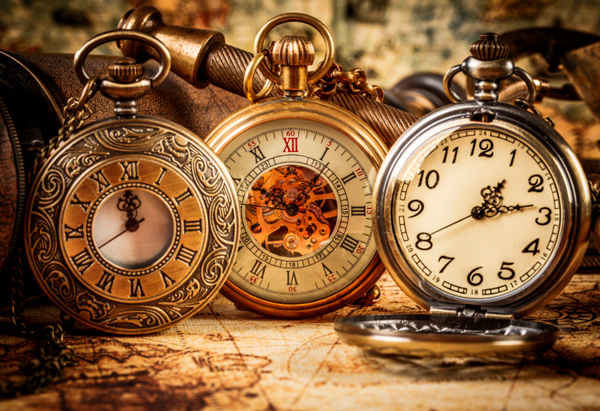Flea markets are dynamic environments. Amidst the array of merchants and buyers and goods tying them together, is the underlying pursuit of finding a rare item for a friendly price, or if you’re on the selling side, getting rid of as much as you brought with you, for as much of a margin as you can sell them for.
Nothing makes a flea market seller happier than leaving a flea market lot empty-handed.
Flea-market frequenters are probably well aware that many goods laid out in front of them are in fact counterfeit, but this is mostly concerned with products you’d see at a major retailer, such as apparel, shoes, fragrances, and electrical products, among others. In fact, according to a 2011 piece in the Washington Times, it was estimated that the U.S. economy loses around $200 billion and 750,000 jobs a year due to counterfeit sales.
However, seasoned second-hand shoppers know that flea markets are full of other goods aside from counterfeit items. Depending on how good the flea market is, there’ll likely be plenty of antique items lying around. But that doesn’t mean they’re all authentic. In this piece we’re going to look at flea-market antiquing, and how to verify those prized finds.
Let’s dig in to the process below.
Know What You’re Looking For
It’s possible to get lucky strolling through row after row, eventually serendipitously landing on an authentic antique. However, you’re much likelier to happen upon them when you have at least a semblance of an idea of what to look for.
Know General Differences Between Fake, Imitation, and Authentic
According to the Federal Trade Commission’s Consumer Information, an antique is an item that’s at least 100 years old. Collectibles have no age requirement; they can be anything that people collect. A vintage collectible is any collectible that’s at least 50 years old.
A reproduction, imitation, or knockoff are the items meticulously crafted to look like their authentic counterparts, but aren’t actually authentic, and thus hold no value. Jewelry and furniture are common offenders in the imitation game.
Get Yourself a Price Guide Book
Unless you possess oodles of antique knowledge (in which case you probably wouldn’t be reading this article), it’s a good idea to get an antique price-guide book. Some reputable guide books to explore are “Warman’s Antiques and Collectibles,” “Kovels’ Antiques and Collectibles Price List,” and “Antique Trader Antiques & Collectibles Price Guide.” These guides all provide high-resolution color images on all sorts of antiques, in addition to prices and detailed descriptions. While no antique book can be completely comprehensive, picking up one of these three is a solid start to knowing your way around the antique market.
Research Similar Items and What They Sold For
In the varying, and sometimes arbitrary pricing field of antiques, your best bet at rock-solid information is to research comparable antiques and what they’ve usually sold for. If you’re looking for an 18th-century rocking chair, you’ll only begin to get an idea of what you should pay until you see other antique rocking chairs from that era and how much those have been sold for. The more specific you are in searching for common details – in the rocking chair’s case, type of wood, shape, and manufacturer origin – the more accurate price you’ll have of an authentic 18th-century rocking chair’s price.
One strategy is to do an eBay completed items search. Simply log-in to your eBay account and then click on the ‘Advanced Link’ at the top of the home page. Type your search terms in the field and make sure you check ‘Completed listings’ – this will show you all listings – whether they were ‘Buy it Now’ or ‘Auction’ – regardless of if they sold or not. If you want more accurate results you might want to also check the ‘Sold listings’ box, which will only show you items that were sold through the platform. After that, review any item matches and look at any details, such as features or conditions, that will give you a better idea of the pricing tier for the item you’re looking for.
Keep the Main Pricing Factors in Mind
There’s a reason certain antiques are incredibly valuable and other ones not so much. What type of material(s) is the antique made out of? Is it part of a limited-edition run? Did a prominent artist create it? Is it of any historical significance? Where was it manufactured? All of these things can turn an otherwise-standard antique into an ‘Antiques Roadshow’ hit, you just have to know the contents and story of what you’re looking at.
Check out Brick-and-Mortar Stores
Your research should extend to physical stores, after all, there’s nothing better than being able to see and touch an item in person to get a gauge for what you’re looking for. Thrift stores, consignment shops and estate sales are all great places to find all sorts of antiques and see what they’re going for. If an employee (or family member in the estate sale’s case) is especially knowledgeable about a particular antique on hand, don’t hesitate to pick their brain to learn more. Every little detail eventually stacks up to an assortment of knowledge which will come in handy when you’re on the hunt to actually purchase something.
Antiquing is rarely straightforward, especially when done right, but that’s also what makes it so fun. Keep the above verification tips in mind the next time you’re on the hunt for a flea-market treasure.




